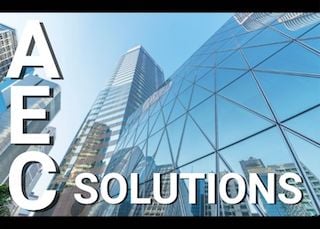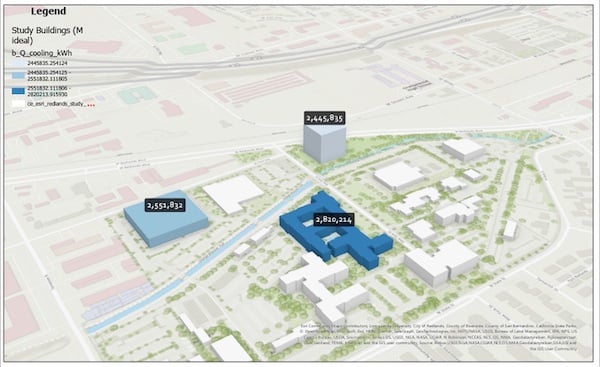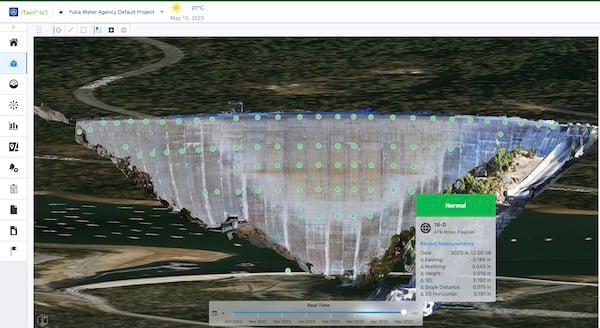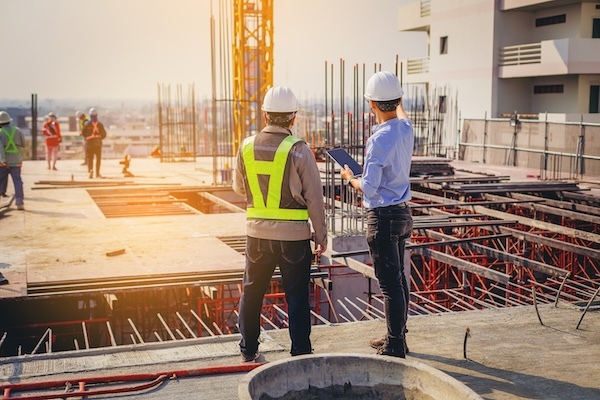
Proceedings of the recent COP28 climate conference could significantly impact the AEC industry, as both public and private agencies strive to reduce greenhouse gas emissions and make infrastructure more sustainable. Negotiations and agreements at COP28 focused on increasing the use of renewable energy sources, reducing embodied carbon in construction, and making future buildings more energy efficient. Technology will likely play key roles in these efforts, as industry participants seek ways to optimize design and construction of new projects, and reassess how to repurpose existing infrastructure.
The conference, held in Dubai from Nov. 30 through Dec. 12, was the 28th meeting of the Conference of the Parties (COP) to the United Nations Framework Convention on Climate Change (UNFCCC). Discussion among the 70,000-plus delegates resulted in more specific action items than previous COP gatherings, according to some attendees.
“It was the first time that we saw information written down that we need to transition away from fossil fuels, and also guidelines on how to do it,” said Rodrigo Fernandes, director of ES(D)G — empowering sustainable development goals — at Bentley Systems, Incorporated. “It was historic.”
AEC Role
According to UN data, fossil fuels (coal, oil, and gas) account for over 75% of global greenhouse gas emissions. According to data from the Buildings Breakthrough, an initiative launched at COP28, buildings contribute 21% of global greenhouse gas emissions. This includes indirect emissions from offsite generation of electricity and heat, resulting in some overlap with the fossil fuel data. The buildings percentage also includes direct emissions produced onsite and embodied emissions from the use of concrete and steel in construction. Transportation and other infrastructure contribute similar amounts as buildings, depending on data sources.
Regardless of the breakdown, the bottom line for the AEC industry is that changes are in the works. The final COP28 agreement includes a goal to triple the use of renewable fuels — primarily solar, wind, and nuclear — and double the annual rate of energy efficiency by 2030. This could lead to additional infrastructure work related to the production and distribution of renewable energy sources, as well as even more focus on energy efficiency in all types of buildings and facilities, whether new or existing.
“This is very much going to fall in the laps of the AEC community,” said Pat Cummens, director of government strategy and policy solutions at Esri. “We need to tighten up our buildings because, if you’re getting cleaner energy but you’re pumping it into inefficient buildings, you’re not really having much of a net gain.”
Experience in energy efficiency and sustainability is becoming more commonly sought by owners hiring AEC firms, added Marc Goldman, Esri’s director of industry solutions for AEC professions. “Owners are requiring the firms that they hire to have a history of policies in addressing those topics in their designs,” he said.
An overall effort to decarbonize manufacturing and other industries is also needed, according to Joe Speicher, chief sustainability officer at Autodesk. “In recent years, we have discussed methods to decarbonize our industries, which requires data, as well as deeply aligned collaboration among the public and private sectors, to scale effective solutions,” Speicher said.
Technology Key
The increased attention on decarbonization will require design professionals to do more analysis of embodied carbon in building materials. Much of the technology for doing this is already in place, such as leveraging digital twin data, according to Bentley’s Fernandes. In an Early Access Program, Bentley introduced tools in 2023 to automate embodied carbon calculation reports and impact analyses in a digital twin environment, enabling infrastructure professionals to explore multiple design choices faster and reduce manual calculations.
“The use of digital twins … can expedite the process of making this analysis for carbon assessment,” said Fernandes, noting that the process may be further aided by generative AI in the future. “We want to make sure that infrastructure professionals spend their time on optimizing rather than doing activities like manually assigning materials, calculating volumes, or aggregating data.” With increased automation, infrastructure professionals can more readily perform multiple assessments on a project, he said.
Embodied carbon impact calculation can be visualized through Bentley’s iTwin Experience technology as part of Bentley’s Early Access Program. Design elements are color coded based on the severity of realized embodied carbon. Image source: Bentley Systems. Click image to enlarge.
The integration of GIS, BIM, and digital twin capabilities can also aid the analysis of embodied carbon, according to Esri’s Cummens. “The ability to bring that plethora of data together in a way where you can actually understand it and visualize it” will be key in designing efficient buildings and infrastructure, she said.
In a recent study of its own campus in Redlands, CA, Esri compared energy efficiency of an existing building with that of two hypothetical buildings. The existing decades-old building has a broad, meandering layout, which is typically not conducive to efficient energy consumption. The analysis showed that the two rectangular-shaped buildings required approximately 13% and 9% less cooling, respectively, than the existing building, reducing annual carbon output by up to 360,000 pounds. For heating, the carbon output would be reduced by up to 250,000 pounds “We can definitely see that through the use of better building forms and orientation, we get better results in terms of the overall energy consumption and carbon output,” noted Goldman.
Esri analyzed energy efficiency of an existing building complex (in dark blue) versus more compact hypothetical buildings. The analysis found significant energy savings with rectangular-shaped buildings. Image source: Esri. Click image to enlarge.
Technology could also aid efforts to monitor and fortify existing infrastructure to withstand future extreme weather events. Using existing technology such as IoT sensors and computer vision, owners of dams, bridges, and other facilities can perform automated monitoring and remote inspections to identify cracks and other potential failure points. “You can have a technician in Australia monitoring a dam in the U.S.,” said Bentley’s Fernandes. The combination of IoT, AI, and human interaction can “achieve a very advanced way of monitoring facilities and save time, money, and ultimately lives.”
Bentley’s iTwin can be used to create a real-time, multi-sensor monitoring system, such as that shown on the Bullards Bar Dam for the Yuba Water Agency in California. Image source: Yuba Water Agency. Click image to enlarge.
Virtual and augmented reality also offers potential in analyzing facilities and infrastructure for climate resilience. The combination of GIS, BIM, and other data can create immersive environments, allowing project stakeholders to experience built-world models in innovative ways, said Esri’s Goldman. “Immersive technologies can help inform those who aren't going to look at an architectural set of plans,” he said.
Challenges Ahead
The goals agreed to at COP28 present numerous challenges for infrastructure professionals. For example, if renewables are indeed tripled by 2030, power transmission facilities will require major upgrades to reach remotely located solar and wind generation facilities, Goldman said. Also, as electric vehicle use becomes more common, the grid may require upgrades to address widespread EV charging. “We really are challenged with an old grid and old infrastructure, yet we have these far-reaching goals to become modern and get away from carbon based fuels and to embrace using more renewables,” said Goldman.
The transmission challenge may require new approaches, such as locating solar generating facilities along highways where they could more easily be connected into local communities, noted Cummens. “There's a lot of potential for mapping and analytics that could help bridge that gap to connect the generation and transmission to meet the need for more renewables.” Another idea discussed at COP28 was to consider EVs as part of the transmission solution, as they are essentially mobile energy storage units and could potentially transmit energy back into the grid at key points.
A renewed interest in nuclear power also emerged at COP28. More than 20 countries launched a declaration to triple global nuclear energy capacity by 2050, according to a U.S. Department of Energy statement.
AEC firms will want to stay tuned as COP28 agreements evolve into action items for public and private agencies. The infrastructure landscape appears to be changing significantly and could lead to new paths for obtaining and performing work.
Andrew G. Roe
Cadalyst contributing editor Andrew G. Roe is a registered civil engineer and president of AGR Associates. He is author of Using Visual Basic with AutoCAD, published by Autodesk Press. He can be reached at editors@cadalyst.com.
View All Articles








Share This Post